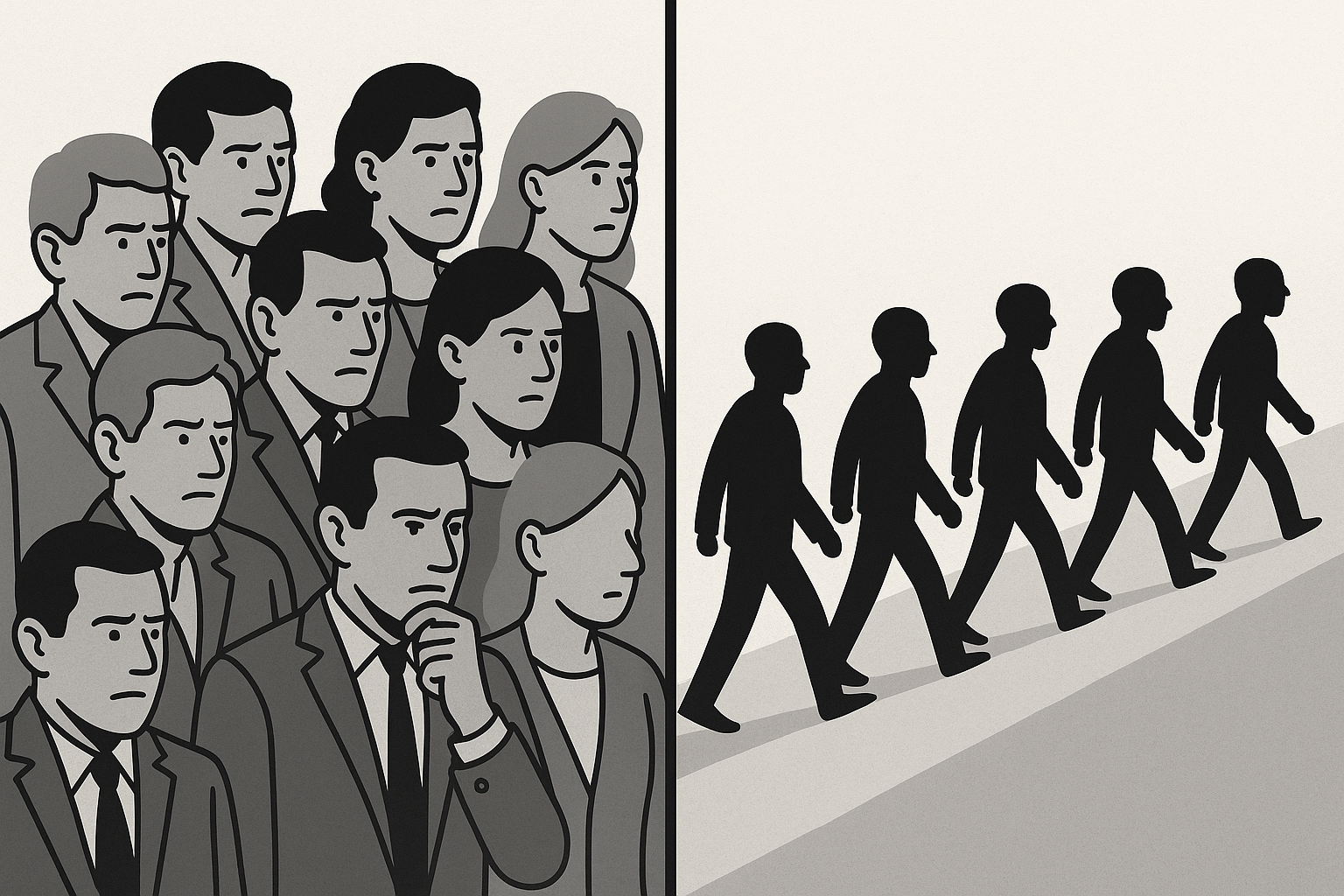The idea that groups can often make better decisions than individuals has fascinated psychologists, economists, and business leaders for decades. Known as the “Wisdom of the Crowds”, this concept suggests that when individual opinions are aggregated, the result can be surprisingly accurate. Yet, there is a darker flip side – the “Lunacy of Lemmings” – when group dynamics lead to systematic errors, herd behavior, and collective blind spots.
This paradox has been explored by mathematicians like Edward O. Thorp, as well as behavioral scientists such as Daniel Kahneman, whose book Noise delves into the flaws of judgment in groups and individuals. Understanding when group opinions are useful – and when they are not – is crucial for leaders, investors, and everyday decision-makers.
The Wisdom of the Crowds: Why Averaging Opinions Sometimes Works
The concept of crowd wisdom dates back to Francis Galton’s famous ox-weighing contest in 1906, where the average of hundreds of individual guesses turned out to be nearly exact. This effect works because:
- Errors cancel each other out: Random mistakes balance across a large group.
- Diverse perspectives matter: Each participant adds unique information.
- Independence prevents distortion: When people form judgments without influence, the aggregated result is more reliable.
In finance, Thorp highlighted similar effects in probability and prediction markets, where aggregated bets often outperform experts. In business, consumer surveys, forecasting markets, and even platforms like Wikipedia rely on the principle that many independent inputs can yield more accurate results than any single authority.
The Lunacy of Lemmings: When the Crowd Goes Wrong
While crowd wisdom can be powerful, it is far from foolproof. The same forces that make aggregation useful can also lead to catastrophic errors:
- Herd behavior: People copy others instead of thinking independently, amplifying mistakes.
- Social influence: If individuals adjust their opinions after hearing the group, diversity is lost.
- Systematic bias: When the entire group shares flawed assumptions, averaging cannot correct it.
Examples of this failure include financial bubbles, mass hysteria, and poor political decisions made through groupthink. Instead of balancing errors, collective opinion magnifies them, leading to the “lunacy of lemmings” – where people follow the crowd straight off a cliff.
Kahneman’s Insights from Noise: The Problem of Judgment Variability
Daniel Kahneman, in his book Noise, distinguishes between bias (systematic errors) and noise (random variability in judgment). His findings reveal that human decision-making, even among experts, is shockingly inconsistent.
Some key takeaways from Noise:
- Two judges, two outcomes: Even trained professionals often give wildly different assessments of the same case.
- Group noise: When averaging multiple noisy judgments, results may improve – but only if the noise is truly random.
- The illusion of agreement: Committees and groups often believe they’ve reached accuracy through consensus, when in fact they’ve suppressed diversity of thought.
Thus, according to Kahneman, aggregation works only under the right conditions: independence, diversity, and randomness in error. When noise is correlated – meaning everyone makes similar mistakes – averaging offers no protection.
When to Trust Averaged Opinions
Based on Thorp’s mathematical insights and Kahneman’s psychological findings, averaged group opinions are useful when:
- Judgments are independent – individuals form opinions without being influenced by others.
- There is true diversity – people bring different perspectives, experiences, and data.
- Errors are random – biases do not systematically point in the same direction.
- The question is factual or measurable – such as “What is the weight of this object?” or “What will the market price settle at?”
When Averaging Fails – and Can Be Dangerous
On the other hand, relying on crowd wisdom is risky or misleading when:
- Social pressure dominates – individuals align with group norms instead of independent judgment.
- The group shares the same blind spots – cultural, political, or industry biases.
- High stakes create emotional contagion – fear and greed in markets are classic examples.
- The problem is subjective – questions of taste, morality, or unique creativity don’t benefit from averaging.
Practical Applications: Using Group Wisdom Wisely
- Investing: Market averages can reflect crowd wisdom, but bubbles show the danger of herd behavior.
- Business Strategy: Crowdsourced data (e.g., customer feedback) is valuable when collected independently, but risky if dominated by groupthink.
- Policy Making: Panels and committees should use structured techniques like the Delphi method to preserve independence.
- Personal Decisions: Seeking multiple independent perspectives is useful, but beware of over-reliance on consensus.
Conclusion: Navigating Between Wisdom and Lunacy
The line between the wisdom of the crowds and the lunacy of lemmings is thin. As Thorp demonstrated mathematically and Kahneman emphasized psychologically, aggregation can sharpen accuracy or multiply errors – depending on conditions.
The key lies in fostering independence, diversity, and random error while guarding against herd behavior, bias, and systematic noise. When done right, group opinions can outperform experts. When done wrong, they can lead to disastrous misjudgments.
In a world increasingly shaped by collective decisions – from markets to social media to politics – knowing when to trust the crowd and when to step aside from it may be one of the most valuable skills of the 21st century.
